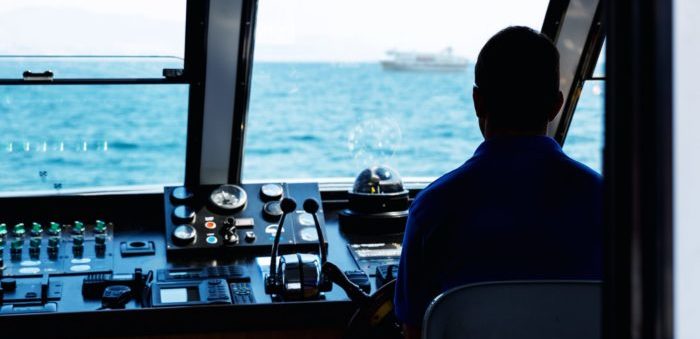A passenger/Ro-Ro cargo ferry, carrying 99 passengers and 53 crew, grounded on a charted shallow area while arriving in port at low tide. It was morning twilight and weather was good. The vessel remained aground for over an hour and refloated on a rising tide. In the latest volume of its Safety Digest, UK MAIB analyzed the incident providing useful lessons learned.
The incident
At the end of the sea passage, helm control was changed from autopilot to manual steering by altering the steering mode selector switch setting at the centreline helm console from ‘auto’ to ‘helm’, and a helmsman began steering the vessel. The master had the conn and he was assisted by the second officer on the bridge.
The master went to the starboard bridge wing in anticipation of commencing a turn to port towards the berth and then manoeuvring the vessel starboard side alongside. The speed was 13.5kts. The master took control of and tested the engines and the bow thruster. The helmsman remained at the helm, manually steering to the master’s orders.
A short time later, the master pressed a selector button on the bridge wing console to take control of the helm, and then stated aloud that he ‘had the helm’. At the vessel’s usual turn starting position, the master applied port helm on the bridge wing. However, the vessel did not turn and the master realised that there was a problem with the steering. He quickly split the engine controls and put the port propeller control astern. This reduced the speed and started to turn the vessel.
The master then sent the second officer to check the helm control system. On arrival at the centreline helm console, the second officer realised that the steering mode selector switch was still in the ‘helm’ rather than the ‘call up’ setting, which was required to transfer helm control to the bridge wing. He changed the selector switch to the ‘call up’ setting, and the master then took control of the helm on the bridge wing. However, it was too late, and the vessel grounded in a charted shallow area to starboard of the planned track.
Lessons learned
The MAIB has investigated several accidents involving ferries that resulted from an omission to switch control from the centreline console to the bridge wing manoeuvring console during routine port arrivals.
The officers and crews of ferries are particularly vulnerable to such omissions as a consequence of routine familiarity and lack of previous incidents creating a potential for reduced situational awareness, as demonstrated in this accident.
- The steering mode selector switch at the centreline helm console had four settings: ‘auto’, ‘helm’, ‘call up’ and ‘nfu’. The normal procedure when changing from autopilot to manual steering was to change the selector switch setting from ‘auto’ to ‘call up’. The ‘call up’ setting allowed the vessel to be steered manually from the centreline helm console, and when a selector button was pressed on the bridge wing, to then be steered from the bridge wing. On this occasion, the selector switch was inadvertently changed to the ‘helm’ setting, which allowed manual steering from the centreline helm console only.
- When the master went to the bridge wing and took control of the engines and the bow thruster, he tested them but did not report that he had done so. When he then pressed the selector button to take control of the helm, he reported to the remaining bridge team that he ‘had the helm’; however, he omitted to test his control of the helm from the bridge wing. Positive reporting is a good thing. However, it is only effective if the positive report follows an affirmative test. In addition to testing and positive reporting, confirmation of receipt of the report ensures situation awareness by the bridge team as a whole.
- A light panel indicated which station had control. However, none of the bridge team checked the indicator light panel to confirm that the helm control had been passed to the bridge wing. The bridge team no longer recognised the value provided by the indicator light panel




























































